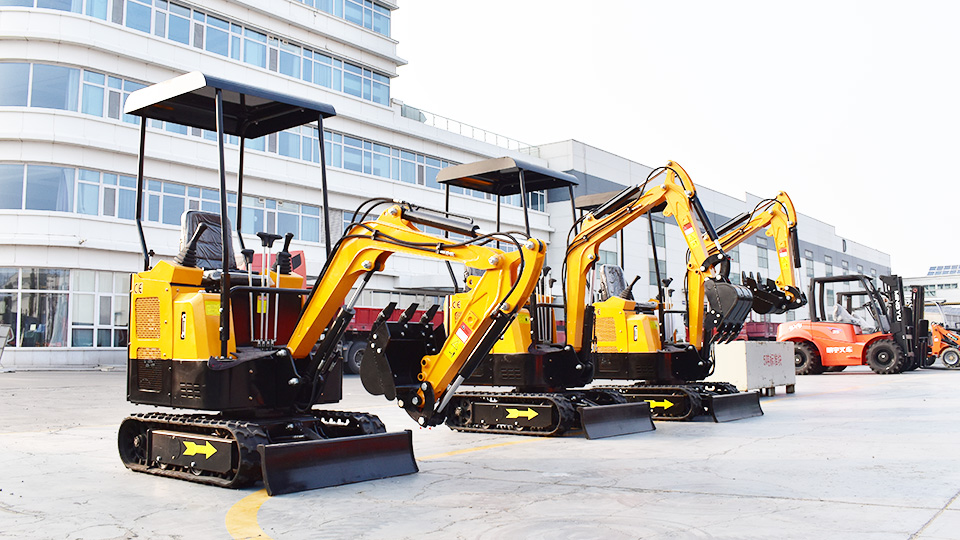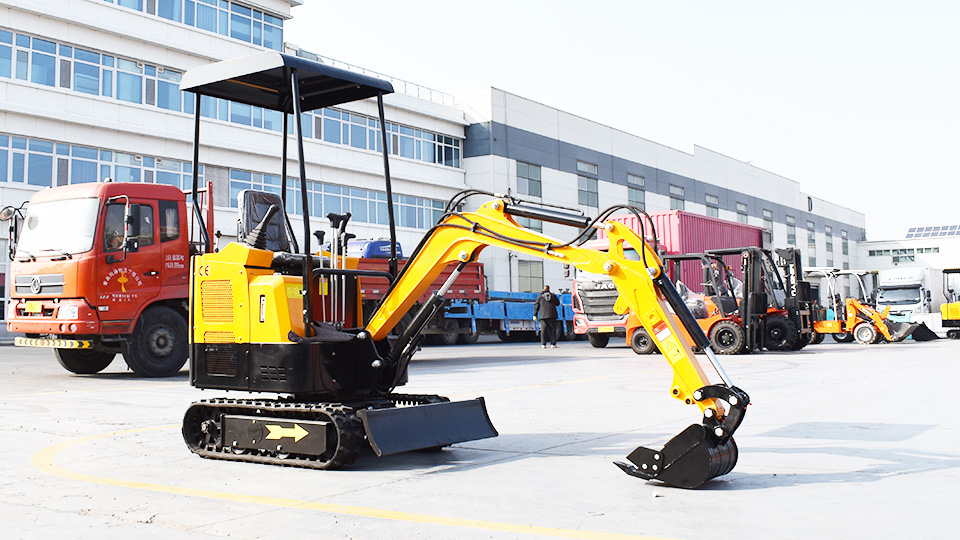The Heart of the Dig: Determining the Best Engine for a Mini Excavator
Mini excavators, those compact yet powerful workhorses of the construction, landscaping, and utility industries, have revolutionized how we tackle smaller-scale excavation tasks. Their maneuverability, versatility, and ability to access confined spaces make them indispensable on countless job sites. At the core of every mini excavator lies its engine, the driving force behind its digging power, hydraulic functions, and mobility. Choosing the "best" engine for a mini excavator is not a one-size-fits-all proposition; it depends heavily on a multitude of factors, including the intended applications, operating environment, performance requirements, and long-term ownership considerations. This comprehensive technical article will delve into the key engine types commonly found in mini excavators, analyze their strengths and weaknesses, and explore the crucial criteria for selecting the optimal power plant for your specific needs.
Understanding the Power Demands of a Mini Excavator:
Before diving into engine types, it's essential to appreciate the diverse power demands placed upon a mini excavator engine. Unlike a vehicle primarily focused on propulsion, a mini excavator engine must simultaneously and efficiently power several critical functions:
Hydraulic System: This is the primary consumer of engine power, driving the boom, dipper arm, bucket, and auxiliary attachments like hydraulic breakers or augers. The engine must provide consistent and sufficient hydraulic flow and pressure for effective digging and attachment operation.
Travel System: The engine powers the hydraulic motors that drive the tracks or wheels, enabling the excavator to move around the job site. This requires sufficient torque to navigate varying terrains and inclines.
Auxiliary Functions: Some mini excavators power additional features like blade operation or cab climate control from the main engine.
The engine's ability to deliver reliable power across this spectrum directly impacts the excavator's productivity, efficiency, and overall performance.
Common Engine Types in Mini Excavators:
The vast majority of mini excavators are powered by diesel engines. While other fuel sources like gasoline or electric power exist in niche applications or smaller micro-excavators, diesel dominates the market due to its inherent advantages in terms of power density, fuel efficiency, and durability in demanding environments. Within diesel engines, there are variations in design and technology:
1. Naturally Aspirated Diesel Engines:
Principle of Operation: These engines rely solely on atmospheric pressure to draw air into the cylinders for combustion.
Characteristics: Generally simpler in design, potentially offering easier maintenance and lower initial cost compared to turbocharged engines. However, they produce less power for a given engine displacement and can experience a noticeable power loss at higher altitudes due to reduced air density.
Use in Mini Excavators: Commonly found in smaller and older mini excavator models where outright power is less critical, or in regions where emissions regulations are less stringent.

Advantages:
Simpler design.
Potentially lower initial cost.
Easier to maintain in some aspects.
Disadvantages:
Lower power output for a given size.
Power loss at high altitudes.
Generally less fuel-efficient than turbocharged engines under load.
2. Turbocharged Diesel Engines:
Principle of Operation: These engines utilize a turbocharger, a turbine driven by exhaust gases, to force more air into the cylinders. This increased air intake allows for the combustion of more fuel, resulting in significantly higher power and torque output for the same engine displacement.
Characteristics: Offer superior power-to-weight ratios, better performance at high altitudes, and often improved fuel efficiency under load compared to naturally aspirated engines. However, they have a more complex design with additional components (turbocharger, intercooler in some cases) that can add to the initial cost and potentially increase maintenance complexity.
Use in Mini Excavators: Increasingly prevalent in modern mini excavators across various size classes, especially those requiring robust digging force and efficient hydraulic power.
Advantages:
Higher power and torque output.
Improved performance at high altitudes.
Often better fuel efficiency under load.
Disadvantages:
More complex design.
Potentially higher initial cost.
Turbocharger adds a potential point of failure.
3. Direct Injection (DI) vs. Indirect Injection (IDI) Diesel Engines:
This refers to how fuel is introduced into the combustion chamber:
Indirect Injection (IDI): Fuel is injected into a pre-combustion chamber, where it partially combusts before entering the main cylinder.
Characteristics: Generally quieter operation and less sensitive to fuel quality compared to DI engines. However, they tend to be less fuel-efficient and produce more emissions.
Use in Mini Excavators: Older models or smaller, less technologically advanced excavators might still utilize IDI engines.
Direct Injection (DI): Fuel is injected directly into the main combustion chamber.
Characteristics: Offers better fuel efficiency, higher power output, and lower emissions compared to IDI engines. Modern DI systems often incorporate common-rail technology and electronic controls for precise fuel delivery.
Use in Mini Excavators: The dominant injection technology in modern mini excavators due to its performance and emissions advantages.
4. Electronic Engine Controls:
Modern diesel engines in mini excavators increasingly incorporate electronic control units (ECUs) to manage various engine parameters, including fuel injection timing, fuel pressure, and air intake.
Characteristics: Enable finer control over engine performance, leading to improved fuel efficiency, reduced emissions, and enhanced diagnostic capabilities. They can also facilitate features like automatic engine shutdown and optimized power delivery for different operating modes.
Use in Mini Excavators: Becoming standard in newer models, particularly those adhering to stricter emissions regulations.
The "Best" Engine: Key Selection Criteria:
Determining the "best" engine requires a careful evaluation of your specific needs and priorities. Here are the crucial factors to consider:
1. Power Requirements:
Digging Force: The engine must provide sufficient hydraulic power to achieve the necessary breakout force for the types of soil and materials you will be excavating. Larger and denser materials will demand more engine power.
Attachment Usage: If you frequently use hydraulic attachments like breakers, augers, or grapples, the engine needs to deliver consistent and adequate hydraulic flow and pressure for these tools to operate effectively.
Travel Performance: Consider the typical terrain and inclines you will be navigating. More demanding travel conditions will require an engine with higher torque output.
2. Fuel Efficiency:
Fuel costs can represent a significant portion of the operating expenses of a mini excavator. An engine with good fuel efficiency can lead to substantial savings over the long term. Turbocharged and direct-injection engines generally offer better fuel economy under load.

3. Emissions Regulations:
Depending on your location and the intended job sites, you may need to comply with specific emissions standards (e.g., Tier 4 Final in North America, Stage V in Europe). Modern engines often incorporate technologies like diesel particulate filters (DPFs), selective catalytic reduction (SCR), and exhaust gas recirculation (EGR) to meet these regulations. These systems can add to the complexity and maintenance requirements.
4. Reliability and Durability:
Mini excavators often operate in harsh environments, so engine reliability and durability are paramount. Choose an engine from a reputable manufacturer known for producing robust and long-lasting power plants. Consider the engine's track record and user reviews.
5. Maintenance Requirements:
Consider the ease of access for maintenance and the frequency of required servicing. Simpler engines might have lower routine maintenance needs, while more complex engines with turbochargers and emissions control systems may require more specialized servicing. Factor in the availability and cost of spare parts.
6. Noise and Vibration Levels:
Engine noise and vibration can impact operator comfort and productivity, as well as be a concern in noise-sensitive environments. Modern engines often incorporate features to reduce noise and vibration.
7. Altitude Performance:
If you frequently operate at high altitudes, a turbocharged engine will generally perform better than a naturally aspirated one due to its ability to compensate for reduced air density.
8. Initial Cost:
The initial purchase price of a mini excavator can vary depending on the engine type and technology. While a more powerful and efficient engine might have a higher upfront cost, it could lead to lower operating costs and higher productivity in the long run.
9. Manufacturer Reputation and Support:
Choose a mini excavator from a manufacturer with a strong reputation for quality and reliable after-sales support, including access to parts and service networks. The engine manufacturer's reputation can also be a factor to consider.
The Evolving Landscape: Electric Power:
While diesel engines currently dominate, the trend towards electrification is also reaching the mini excavator market. Electric mini excavators offer several advantages:
Zero Emissions: Ideal for indoor work or environmentally sensitive areas.
Quiet Operation: Significantly reduces noise pollution.
Lower Operating Costs: Electricity can be cheaper than diesel, and electric motors typically require less maintenance.
Instant Torque: Provides excellent responsiveness for digging and maneuvering.
However, electric mini excavators also have limitations:
Limited Operating Time: Battery life can be a constraint, requiring recharging.
Higher Initial Cost: Battery technology can add to the upfront expense.
Charging Infrastructure: Requires access to suitable charging facilities.
Power Output (Currently): While improving, the sustained power output of electric models may still be lower than comparable diesel engines in very demanding applications.
As battery technology advances and emissions regulations tighten, electric mini excavators are expected to become increasingly viable, particularly for urban and indoor applications.
Conclusion: A Holistic Approach to Engine Selection:
There is no single "best" engine for every mini excavator application. The optimal choice depends on a careful and comprehensive evaluation of your specific needs and priorities. For demanding digging tasks, frequent use of hydraulic attachments, and operation at varying altitudes, a turbocharged, direct-injection diesel engine with electronic controls is often the preferred option, balancing power, efficiency, and emissions. For smaller tasks or budget-conscious buyers, a naturally aspirated diesel engine might suffice, although it may come with compromises in power and efficiency. As environmental concerns grow, electric mini excavators are emerging as a compelling alternative for certain applications.
Ultimately, the "best" engine is the one that provides the right balance of power, fuel efficiency, reliability, emissions compliance, and cost-effectiveness for your specific mini excavator usage. Thoroughly assessing your requirements and carefully considering the characteristics of different engine types will enable you to make an informed decision and select the heart of your digging machine wisely. Consulting with reputable equipment dealers and considering long-term ownership costs are also crucial steps in this important selection process.
Post time:Sep-25-2020
